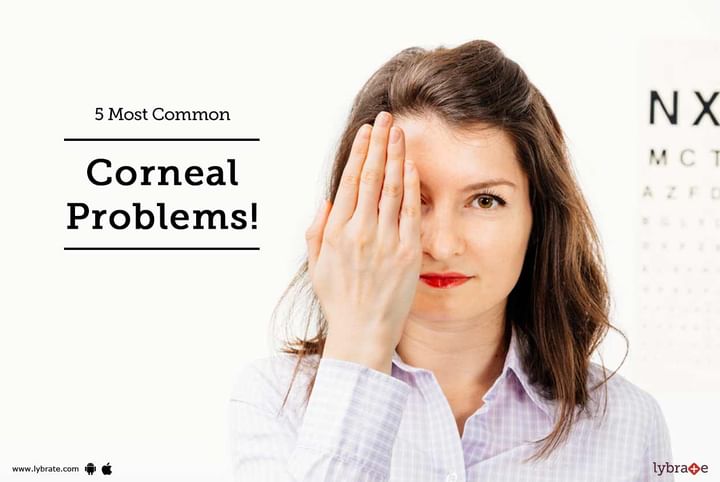Get the App
For Doctors
Login/Sign-up
Last Updated: Jan 10, 2023
BookMark
Report
5 Most Common Corneal Problems!
Dr. Meeta MungaleOphthalmologist • 26 Years Exp.MBBS, MS - Ophthalmology, DNB - Ophthalmology , Fellowship in Cornea and Anterior Segment, Fellowship in Phacoemulsification
The cornea is the transparent layer of the eye that acts as a protective shield. The cornea, in combination with the sclera, protects the eyes from various harmful microorganisms and particulate matter, including the harmful UV radiations (to some extent). The cornea is made up of three important layers, the Endothelium, Stroma, and the Epithelium.
- Endothelium: The inner layer of the cornea, the endothelium helps to maintain a clear vision by removing the excess fluid absorbed by the stroma. The mitochondria-rich single celled layer functions more like a pump.
- Stroma: The middle corneal layer is extremely thick (~90% of the total corneal thickness) and composed mainly of proteins and fluids. Like the endothelium, the stroma, too, plays a pivotal role in the normal eye vision.
- Epithelium: Being the outermost layer, the epithelium functions as a defensive shield, protecting the eyes from harmful germs, bacteria and any matter that can harm the eye. Most importantly, the epithelium absorbs the essential nutrients and oxygen (present in the tears). The cornea, thus, plays a pivotal role in the normal vision of the eye. However, an injury or an infection can interfere with the corneal functioning, affecting a person's vision as well as giving rise to other complications (the eyes may appear itchy, watery and red. There may also be light sensitivity).
Some of the common cornea problems include
- Keratitis: Injury or microbial (bacteria, virus or fungi) infiltration of the cornea can trigger this condition resulting in corneal infection and inflammation. Some of the symptoms characteristic of keratitis include extreme light sensitivity, blurred vision. The inflammation can also result in redness, pain (moderate to severe) and watery eyes. Antifungal, antiviral or steroidal eye drops may provide relief from the associated symptoms.
- Shingles (Herpes Zoster): This condition mainly affects people who have suffered from chickenpox. In some cases, the virus though inactive may still be present in the body (in the nerves). However, at a later period, certain factors may trigger its activation. Once active, the virus can affect different parts of the body, including the cornea. Shingles can cause corneal soreness and inflammation. Old people and those with a weak immunity are more likely to suffer from shingles. People with shingles may benefit from the administration of steroidal (tropical) and antiviral eye drops.
- Ocular Herpes: This is a viral infection triggered by Herpes Simplex Virus I (HSV I) or Herpes Simplex Virus II (HSV II) resulting in herpes of the cornea. The condition gives rise to corneal inflammation and sores. Here too, the patient can get some relief by using antiviral or steroidal eye drops.
- Keratoconus: This is a degenerative disorder of the cornea that results in thinning of the cornea. The condition can also alter the corneal shape, resulting in swelling, pain, and loss of vision (partial to complete, particularly the night vision).
- Fuchs' Dystrophy: This is a corneal dystrophy whereby the corneal endothelial cells break down at a slower rate than usual. As a result, the stroma may be waterlogged resulting in swelling and blurred vision. If you wish to discuss any specific problem, you can consult an ophthalmologist.



+1.svg)
